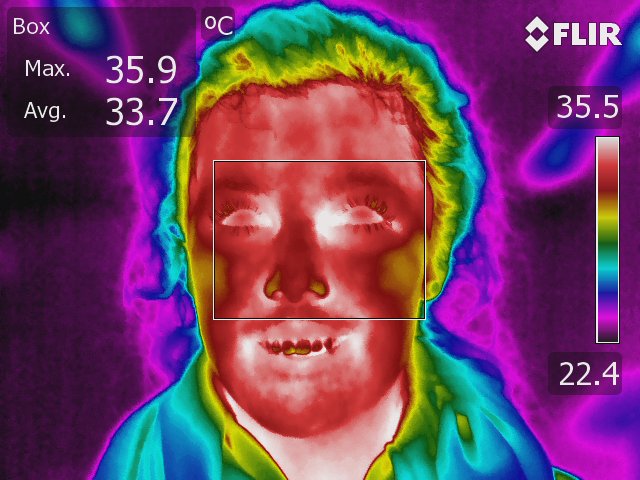Fever screening Coronavirus
using a thermal camera
In places where a lot of people move through, especially in airports and other places where people cross national borders, there is a great opportunity in suppressing pandemics, by screening people for elevated temperatures that may indicate a fever.
Infrared thermography is a valuable tool for screening people in order to find individuals that have a body surface temperature that is elevated above the average of the general population that is screened. This may be an indication that the individual has a fever. If so – in an elevated state of disease alert – that individual may be tested further to diagnose whether the individual has a fever, and what the disease may be.


Benefits
How does it work?
To be able to use non-contact measurement for fever screening purposes, we need to find a point on the outside of the body that is close to the inside temperature – our “body temperature”. Because the outside is colder, and varies from place to place on the body, it is obviously the highest temperature on the outside of the body that is also the closest to the inside temperature. So we want to look for a warm spot on the outside.
We also want that spot to vary up and down in the same way that the inside body temperature does – we want what is called high correlation between outside and inside temperatures. We have to settle with that, because the two temperatures will not be the same.
So what points are available to us then? Generally speaking, the brain is one of the most stable parts of the body, in terms of temperature. It can tolerate very small deviations in temperature. One part of the brain is called the hypothalamus, and it is responsible for the temperature regulation in the whole body. To do that, it needs to have a stable temperature. So we should look for points close to the brain. That suits us well, because the head is most seldom covered with clothes and therefore accessible.
Two pairs of points on the body are close to the brain and have a high rate of blood flow, which they share with the brain to a high degree. Those points are the eardrums and the areas in the corners of our eyes, close to the nose.
The eardrums are too hidden for our purposes, so we are left with the corners of the eyes.
How can we help you?
Our level 3 thermographers deliver consulting on your hardware purchase, setting up the workplace and training of your staf and operators.
Consulting
Together with your staff and depending on your specific situation and wishes we compile the requirements.
Operator training
During a one day practical course your operators learn how to use the IR camera properly for the purpose of fever screening. The course is not depending on the type of camera you use. Topics are:
